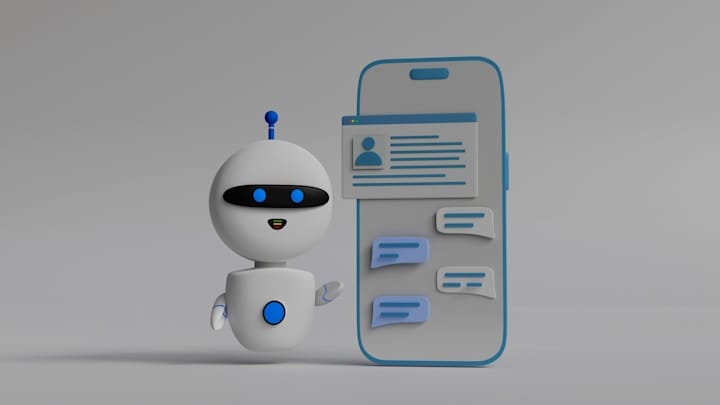TLDR
AI tools streamline social media campaigns by automating content creation, optimizing posting schedules, and personalizing user experiences. They analyze vast data sets to uncover audience insights, predict trends, and enhance engagement. Chatbots handle real-time interactions, while AI-driven analytics refine strategies for better ROI. Micro-influencers can be identified efficiently through AI, and budget-friendly tools make advanced capabilities accessible to startups. By integrating AI, businesses save time, reduce costs, and deliver targeted content that resonates with audiences.
Introduction
Social media has become a cornerstone of modern marketing, but creating impactful campaigns demands time, creativity, and strategic precision. Businesses often struggle with resource constraints, inconsistent engagement, and the pressure to stay ahead of trends. Enter AI: a game-changer that automates repetitive tasks, deciphers complex data, and delivers hyper-targeted content.
This blog explores how AI tools empower businesses to craft smarter social media campaigns, from generating viral content to optimizing ad spend. Whether you’re a startup or an established brand, these strategies will help you harness AI’s potential without breaking the bank.
Skip Ahead
- Understanding AI’s Role in Social Media
- Automating Content Creation
- Enhancing Audience Insights with AI Analytics
- Personalizing User Experiences at Scale
- Optimizing Posting Times and Frequency
- Managing Engagement with AI Chatbots
- Collaborating with Influencers via AI
- Budget-Friendly AI Tools for Startups
- Measuring Campaign Success with AI
Understanding AI’s Role in Social Media
AI transforms social media management by handling tasks that traditionally required manual effort. Machine learning algorithms analyze historical data to predict trends, while natural language processing (NLP) tools generate captions, hashtags, and responses. For example, platforms like Hootsuite use AI to recommend optimal posting times, and Canva’s Magic Write crafts engaging copy.
Key AI capabilities include:
- Pattern Recognition: Identifying high-performing content types (e.g., videos vs. infographics).
- Sentiment Analysis: Gauging audience reactions to posts in real time.
- Predictive Analytics: Forecasting viral topics or seasonal trends.
By offloading these tasks, teams focus on creativity and strategy.
Automating Content Creation
AI tools like ChatGPT and Jasper generate blog ideas, captions, and even video scripts. For visual content, DALL-E creates custom images, while Canva offers AI-driven design templates.
Steps to Automate Content:
- Idea Generation: Use BuzzSumo to identify trending topics.
- Copywriting: Input prompts like “Write a TikTok script for a eco-friendly product launch” into ChatGPT.
- Visuals: Generate branded graphics with Adobe Firefly.
- Scheduling: Deploy tools like Buffer to auto-publish content.
This reduces production time by up to 70%, allowing small teams to compete with larger brands.
Enhancing Audience Insights with AI Analytics
Platforms like Brandwatch and Sprout Social use AI to dissect demographics, interests, and behaviors. For instance, AI can segment audiences into micro-groups based on engagement patterns, enabling tailored campaigns.
Key Metrics AI Uncovers:
- Engagement Rate: Which posts trigger shares or comments.
- Follower Growth: Correlations between content types and new followers.
- Click-Through Rates (CTR): How often links drive traffic.
Personalizing User Experiences at Scale
AI hyper-personalizes content by analyzing user data like browsing history and past interactions. Tools like Dynamic Yield customize social ads in real time, while Phrasee optimizes email and social copy for individual preferences.
Example:
A fitness brand uses AI to segment audiences into “yoga enthusiasts” and “HIIT lovers,” delivering targeted reels and product recommendations.
Related Blog: How to Leverage AI Tools for Hyper-Personalized Marketing Campaigns
Optimizing Posting Times and Frequency
AI tools like Later analyze when your audience is most active. For example, a B2B company might find LinkedIn posts perform best at 10 AM on Tuesdays, while a Gen Z-focused brand thrives on TikTok at 7 PM.
Best Practices:
- Test multiple schedules using AI recommendations.
- Adjust frequency based on platform algorithms (e.g., Instagram prioritizes recent posts).
Managing Engagement with AI Chatbots
Chatbots like ManyChat and MobileMonkey answer FAQs, process orders, and collect leads 24/7. For example, a restaurant chain’s chatbot can book reservations via Instagram DMs, freeing staff for in-person service.
Tips:
- Train chatbots with industry-specific FAQs.
- Use NLP to mimic human conversation tones.
Collaborating with Influencers via AI
AI platforms like Upfluence and HypeAuditor identify micro-influencers whose audiences align with your brand. For example, a skincare startup can partner with nano-influencers (1K–10K followers) boasting 85% higher engagement rates than macro-influencers.
Strategy:
- Analyze influencers’ audience demographics and authenticity scores.
- Use AI to track campaign ROI, such as referral traffic or coupon code usage.
Related Blog: The Role of Micro-Influencers in Modern Social Media Marketing Campaigns
Budget-Friendly AI Tools for Startups
Startups can leverage free or low-cost tools:
- Copywriting: Copy.ai (Free tier available).
- Graphics: Canva ($12.99/month for Pro).
- Analytics: Google Analytics (Free).
- Chatbots: Tidio (Free up to 50 conversations/month).
Measuring Campaign Success with AI
AI dashboards like Dash Hudson track KPIs such as:
- ROAS (Return on Ad Spend): Revenue generated per ad dollar.
- Share of Voice: Brand mentions vs. competitors.
- Sentiment Trends: Positive/negative feedback shifts.
Adjust campaigns dynamically—for example, reallocating budget from underperforming Facebook ads to trending TikTok hashtags.
Conclusion
AI democratizes social media success by automating labor-intensive tasks, personalizing content, and providing actionable insights. From chatbots to predictive analytics, these tools enable businesses to maximize engagement and ROI, even with limited resources. By integrating AI into your strategy, you’ll stay agile in a rapidly evolving digital landscape, turning followers into loyal advocates.







